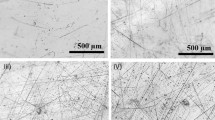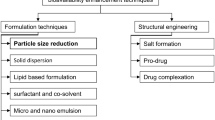Abstract
The colloidal interactions of both HEUR and HASE associative polymers with pigments in the presence of dispersant are complicated and subject to a number of variables. The objective of this work was to clarify the conditions needed to achieve good pigment dispersion in associative thickener systems by characterizing particle dispersion behavior. This had previously been done for latex particles, but not for pigments such as TiO2. Good dispersion leads to optical properties, such as gloss and hiding, that are superior to nonassociative thicknener systems. Pigment dispersion phase diagrams represent a good way to visualize the complex interactions among pigments, dispersant, and thickener. The two most important variables were found to be pigment type (i.e., surface composition) and dispersant composition. Associative thickners can yield good pigment dispersion or flocculation, depending on the correct matching of dispersants and pigment type. Because of the hydrophobic functional groups governing associative thickner behavior, dispersants having some hydrophobic character yielded the best pigment dipersions and optical properties because they could couple the pigment particles with the associative thickener network. Interior-grade TiO2 tended to yield better dispersions and optical properties than exterior-grade TiO2. Optimized associative thickner systems generally had improved optical properties over comparable nonassociative systems. Optical properties correlated well with particle dispersion behavior as displayed by the dispersion phase diagrams.
Similar content being viewed by others
References
Glass, J.E., “A Perspective on the History of and Current Research in Surfactant-Modified, Water-Soluble Polymers,”J. Coat. Technol., 73, No. 913, 79 (2001).
Kostansek, E., “Using Dispersion/Flocculation Phase Diagrams to Visualize Interactions of Associative Polymers, Latexes, and Surfactants,”J. Coat. Technol., 75, No. 940, 27 (2003).
Kostansek, E., “Associative Polymer/Latex Dispersion Phase Diagrams II: HASE Thickners,”J. Coat. Technol. Res., 2, No. 6, 1 (2005).
Sperry, P.R., Thibeault, J.T., and Kostansek, E.C., “Flocculation and Rheological Characteristics of Mixtures of Latexes and Water-Soluble Polymeric Thickners,”Adv. Org. Coatings Sci. Technol., Series 9, 1 (1987).
Thibeault, J.T., Sperry, P.R., and Schaller, E.J., inWater Soluble Polymers: Beauty with Performance, Advances in Chemistry Series 213, Glass, J.E. (Ed.), American Chemical Society, Washington, D.C., Chapter 20, 1986.
Sperry, P.R., “A Simple Quantitative Model for the Volume Restric-tion Flocculation of Latex by Water-Soluble Polymers,”J. Colloid Interface Sci., 82, 62 (1981); Sperry P.R.,J. Colloid Interface Sci., 87, 375 (1982); Sperry, P.R.,J. Colloid Interface Sci. 99, 97 (1984).
Lundberg, D.J. and Glass, J.E., “Pigment Stabilization Through Mixed Associative Thickener Interactions,”J. Coat. Technol., 64, No. 807, 53 (1992).
Tarng, M-R., et al., inHydrophilic Polymers: Performance with Environmental Acceptability, Advances in Chemistry Series 248 Glass, J.E. (Ed.), American Chemical Society, Washington, D.C., Chapter 24 1996.
Bergh, J.S., Lundberg, D.J., and Glass, J.E., “Rheology of Associative Thickener Pigment and Pigmented Commercial Latex Dispersions,”Prog. Org. Coat., 17, 155 (1989).
Hulden, M. and Sjoblom, E., “Adsorption of Some Common Surfactants and Polymers on TiO2 Pigments,”Prog. Polym. Colloid Sci., 82, 28 (1990).
Svanholm, T., Kronberg, B., and Molenaar, F., “Adsorption Studies of Associative Interactions Between Thickener and Pigment Particles,”Prog. Org. Coat., 30, 167 (1997).
Glass, J.E., “Adsorption of HEUR Thickeners on Latex and Titanium Dioxide Disperse Phases,”Adv. Colloid Interface Sci., 79, 123 (1999).
Melville, I., et al., “Pigment Thickener Interactions in Emulsion Paints,”Polymers Paint Colour Journal, 177 (4187), 174 (1987).
Johnson, E.A., “Interactions Between Rheology-Modifying and Pigment-Dispersing Agents,”Farbe und Lack, 100 (9), 759 (1994).
Reiman, H., et al, “Particles in Networks,”Farbe und Lock, 108 (9), 91 (2002).
Author information
Authors and Affiliations
Corresponding author
Rights and permissions
About this article
Cite this article
Kostansek, E. Associative polymer/particle dispersion phase diagrams III: Pigments. J Coat Technol Res 3, 165–171 (2006). https://doi.org/10.1007/BF02774506
Issue Date:
DOI: https://doi.org/10.1007/BF02774506




